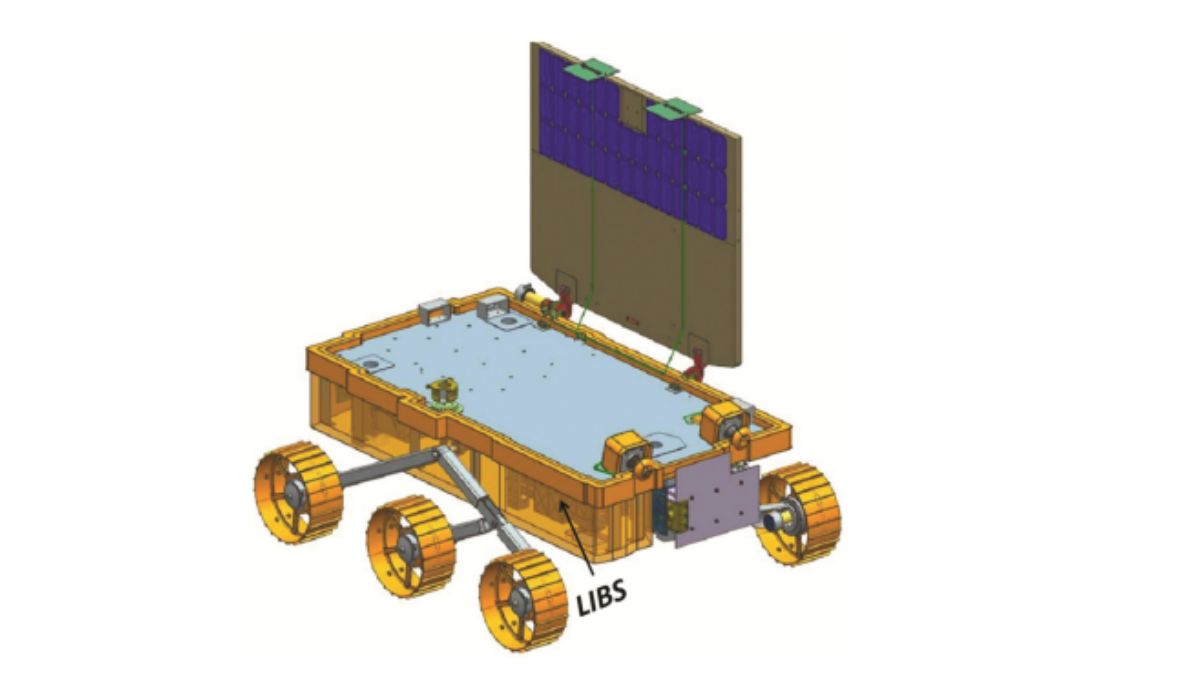For the first time in history, India’s Chandrayaan Mission has discovered sulfur on the moon's surface. The Laser-Induced Breakdown Spectroscopy (LIBS) instrument, which is an integral component of the Chandrayaan-3 Rover's instrumentation, has successfully achieved a historic milestone.
Chandrayaan-3 Mission:
— ISRO (@isro) August 29, 2023
In-situ scientific experiments continue .....
Laser-Induced Breakdown Spectroscope (LIBS) instrument onboard the Rover unambiguously confirms the presence of Sulphur (S) in the lunar surface near the south pole, through first-ever in-situ measurements.… pic.twitter.com/vDQmByWcSL
It has conducted pioneering in-situ analyses of the elemental composition of the lunar surface situated in close proximity to the south pole of the moon. This critical examination has definitively confirmed the presence of Sulphur (S) in this specific region—an assertion that had previously remained beyond the capabilities of instruments mounted on the lunar orbiters.
ALSO READ| What Are the Scientific Instruments Used In Chandrayaan-3?
Initial evaluations, visually depicted, have exposed the existence of several elements on the lunar surface. These include Aluminum (Al), Sulphur (S), Calcium (Ca), Iron (Fe), Chromium (Cr), and Titanium (Ti). Further assessments have brought to light the presence of additional elements, namely manganese (Mn), silicon (Si), and oxygen (O). An ongoing investigation is diligently exploring the potential presence of Hydrogen. It is worth noting that the development of the LIBS payload has been undertaken at the distinguished Laboratory for Electro-Optics Systems (LEOS)/ISRO, located in Bengaluru.
What is LIBS?
The LIBS instrument, which stands for Laser-Induced Breakdown Spectroscope, is an instrumental cornerstone of the Chandrayaan-3 mission. Positioned aboard the Pragyaan rover, it has been meticulously crafted for conducting in-situ investigations into the elemental composition of lunar regolith and pebbles. This probing is focused on an unexplored high-latitude expanse within the southern polar region of the Moon. The apparatus employs a pulsed laser source, accompanied by a suite of optical lenses and mirrors, an aberration-corrected concave holographic grating, and a linear detector, serving as its principal electro-optical components. The LIBS instrument stands out for its compactness, weighing approximately 1.1 kilograms and consuming a minimal amount of power (less than or equal to 1.2 watts).

In essence, LIBS operates on the principle of subjecting materials to concentrated laser pulses for analysis. A potent laser pulse is precisely directed onto the surface of the material under scrutiny, which can encompass rocks or soil. This pulse generates an intensely hot and localized plasma. The ensuing light emissions from the plasma are meticulously analyzed by detectors, such as Charge Coupled Devices, following spectral resolution. Since each element emits distinct wavelengths of light when present in a plasma state, the elemental composition of the material can be accurately determined.
ALSO READ| How are Chandrayaan 3 and Chandrayaan 2 different?
What Is Next For Chandrayaan-3?
Moving forward, the Chandrayaan-3 mission has recently yielded additional insights. Notably, the lunar surface's temperature near the southern pole was profiled—a critical endeavor that provides essential information.
Chandrayaan-3 Mission:
— ISRO (@isro) August 27, 2023
Here are the first observations from the ChaSTE payload onboard Vikram Lander.
ChaSTE (Chandra's Surface Thermophysical Experiment) measures the temperature profile of the lunar topsoil around the pole, to understand the thermal behaviour of the moon's… pic.twitter.com/VZ1cjWHTnd
The ongoing mission agenda entails the continuation of the solar-powered Pragyaan rover and Vikram lander's scientific pursuits. This comprehensive exploration effort is expected to persist for an additional span of seven days. Notably, the rover has traversed a distance of around eight meters since its deployment from the lander. A central focus of the rover's objectives remains the scrutiny of lunar dust and gravel, ultimately contributing to a deeper comprehension of lunar geology and atmospheric conditions. This, in turn, amplifies our understanding of the celestial neighbor that is Earth's moon.
Comments
All Comments (0)
Join the conversation